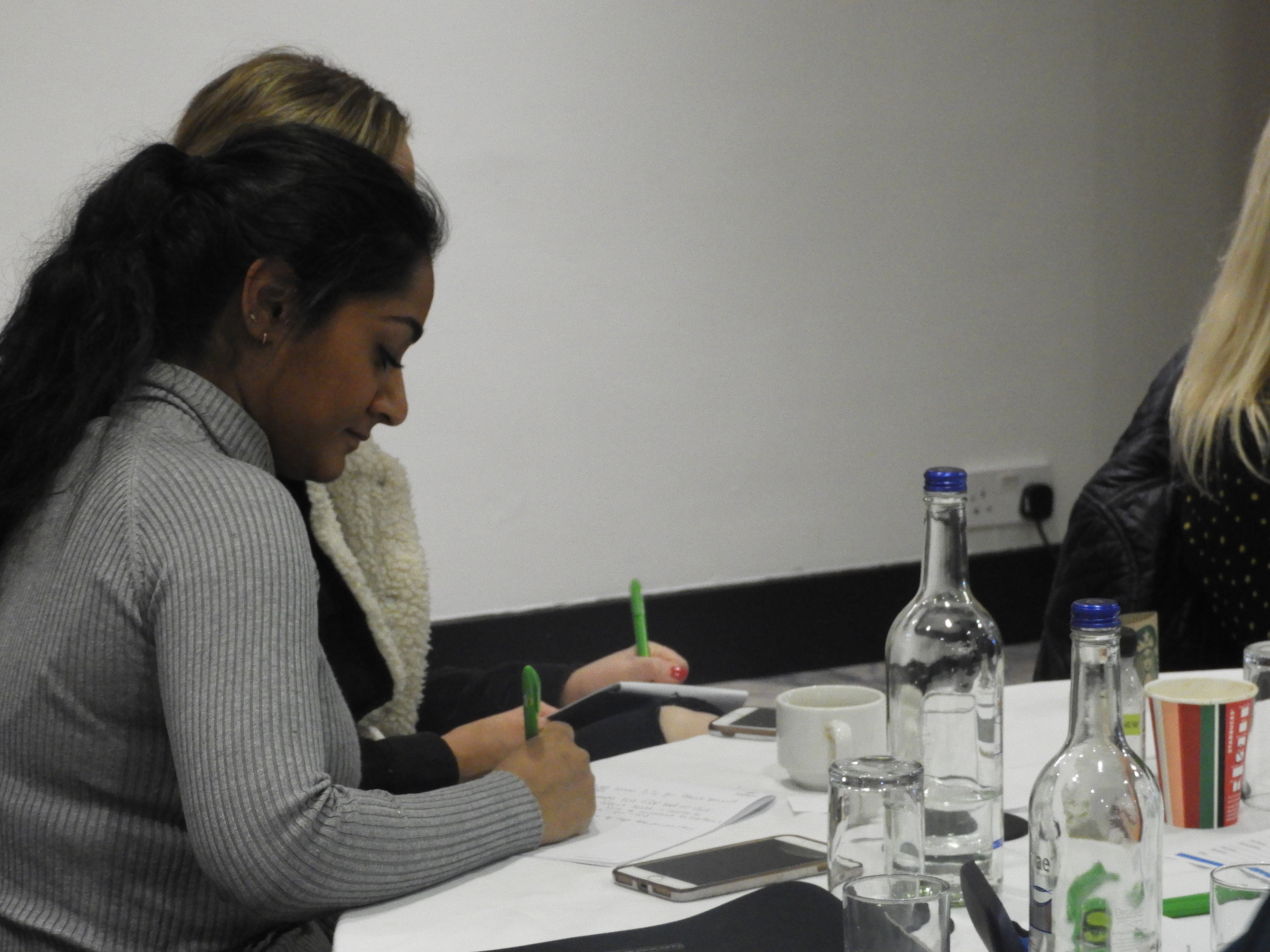
A Day at the Cleft Collective

On Saturday 23rd March, The Cleft Collective welcomed CLAPA’s Cleft Collective Patient Consultation Group to Bristol for a day of presentations and discussions around the next phase of this exciting initiative.
The Cleft Collective is one of the largest cleft research programmes in the world and has accomplished an incredible amount since its launch in 2012. The programme has recruited over 7,700 participants from 2,735 families to submit biological samples and answer detailed questionnaires at key points in their child’s cleft journey, and is now working with all Cleft Teams throughout the UK to get as much information together as possible. As the first group of children they recruited in the five-year cohort approach their 10th birthdays and the oldest children in the birth cohort start to turn 5, data collection is still their priority, but with so much valuable information already gathered, the next phase of their work will see it put to use.
Their databank is now available to researchers from around the world who will be able to analyse the data they have collected and work towards finding answers to some of the most vital questions around cleft lip and palate.
As part of their efforts to involve real people personally affected by cleft throughout the development of their research, the Cleft Collective have worked with CLAPA to put together a consultation group made up of people from our community. The CLAPA Cleft Collective Consultation Group gives people affected by cleft a chance to feed their own ideas and experiences directly into this project, which will impact the lives of families like theirs around the world. Their interest in research together with their personal experiences and knowledge give a unique perspective to the researchers and ensure the programme continues to value and take into account the interests of both the research and cleft communities.
All research in the UK is required to have some level of patient involvement, but to the Cleft Collective it’s clear this is more than a box-ticking exercise or an obligation. This is why CLAPA is so proud to work with them to facilitate this group, and to be involved with sharing their progress with the cleft community. This recent meeting was a chance for our CLAPA Cleft Collective Consultation Group to hear back about the progress that has been made so far, and to learn how their feedback has directly influenced the work of the programme.
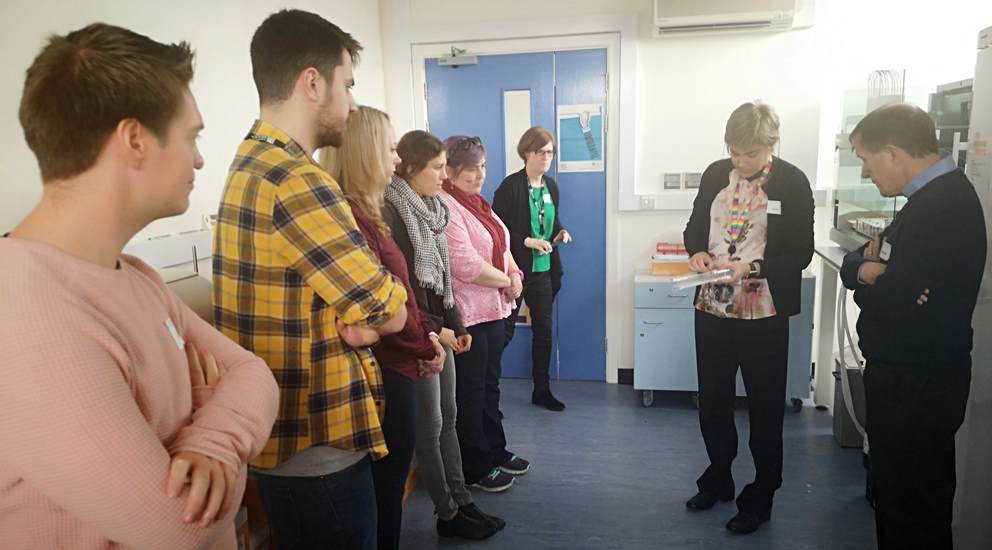
Not even the most diligent researcher can perfectly predict how others might react when presented with their work, but by involving their subjects at an early enough stage we can catch as many potential problems as possible. Small changes, like swapping out words that can be easily misinterpreted depending on someone’s perspective and experiences, can have a big impact. This was one of the Consultation Group’s focuses at the two teleconference meetings held last year. Through the collaboration of The Cleft Collective and CLAPA, the group were able to look through early drafts of questionnaires and other materials provided to parents and patients to give their perspective on how these might be improved. Getting honest feedback like this, even about seemingly minor things, is a vital part of research design, as is particularly important for the Cleft Collective considering the size of their audience they hope to reach.
While all feedback is taken on board not all of it can be actioned, and for good reason. When the goal is to compare results across a number of years or across different populations (including people not affected by cleft or any other condition) you have to make sure you’re asking the exact same questions as other studies so you don’t skew the results. If you change one controversial sentence, you risk changing someone’s honest response to the questions asked. And within the lengthy questionnaires that will soon be landing on doormats and in inboxes of Cleft Collective subjects across the UK, there are a number of these difficult questions that need to stay just as they are.
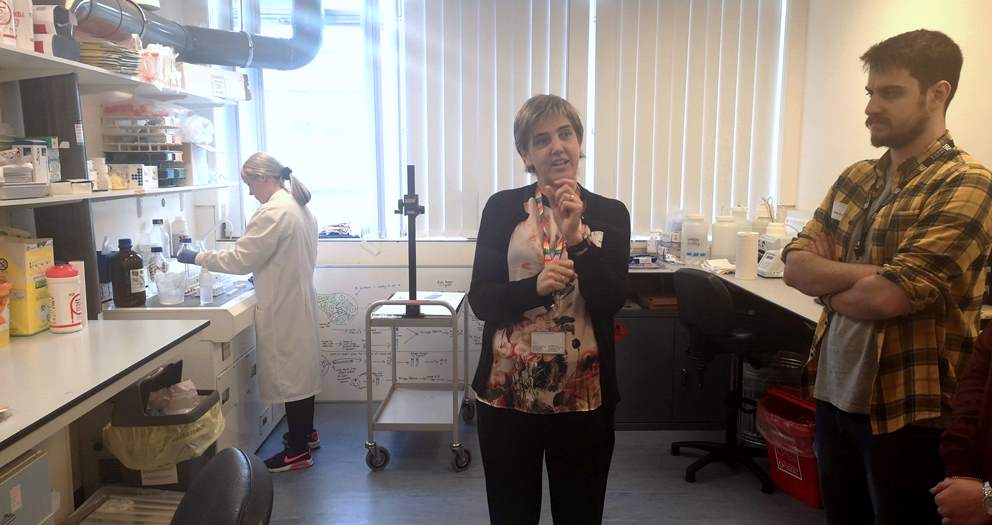
In order to find out how being born with a cleft affects someone, you have to understand in what ways they’re different from others who aren’t affected. To get useful, unbiased results, you can’t make assumptions about what these differences will be – you have to cast a wide net and see what you find. To do this you need to ask a lot of questions across many areas, some of which might seem very strange indeed. In a questionnaire about my child’s health, parents may wonder, why am I being asked about how my current relationship is going, or my lifestyle habits? They may wonder about the implications of these questions, perhaps a link they haven’t been told about which is now just one more thing to worry about.
The reality is far more mundane: many sections in long questionnaires like these have been developed to use as a standard measurement when looking at lots of different populations, not just people affected by cleft. To figure out exactly how a cleft does (and doesn’t!) affect people, we need to ask the same wide range of questions across many different populations so we can compare notes. Maybe it’ll turn out that none of these areas is impacted by cleft, or maybe there’ll be areas we didn’t expect which will spark further investigations, but until we ask these questions, we’ll never know.
It may not be the case that we get firm answers on these any time soon. Research takes time after all, and research into cleft is especially complicated due to the many different factors and variables involved. But sometimes, even just ruling things out can be ground-breaking.
A great example of this is the way we look at education in relation to cleft. We know that children born with a cleft tend overall to have lower educational achievement than their peers, but we don’t know exactly why. In a paper presented just this week at the Craniofacial Conference in London, it was revealed that extensive research on the Cleft Collective’s databank has ruled out genetics as a reason for this difference. Whatever it is about being born with a cleft that affects how well a child does in school, it isn’t in their DNA, and that means it’s something that can be changed. More research like this will bring us closer to the answer until we have the kind of evidence we can act on, helping this difference get smaller and smaller until a cleft will no longer be a barrier to equal educational achievement in the UK. These kinds of breakthroughs are only possible thanks to the wide-ranging, long-term nature of this study and its commitment to answering the questions which really matter to our community.
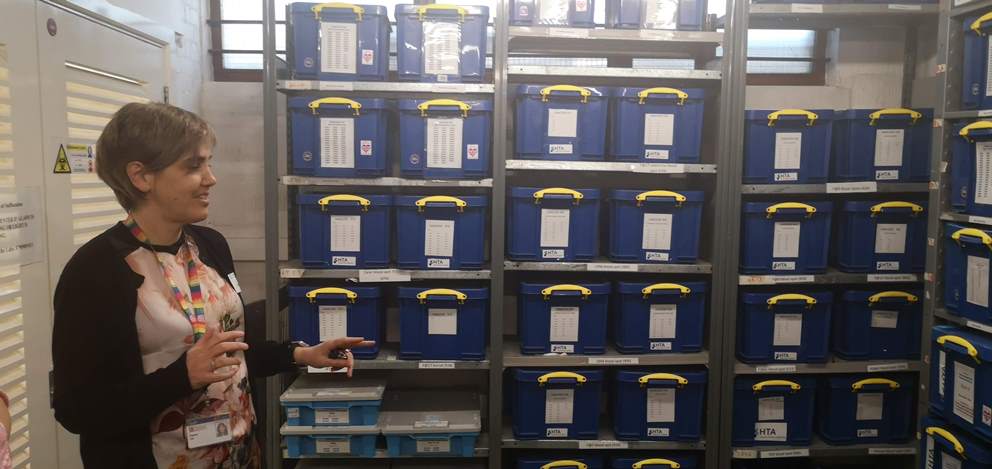
The afternoon of our day in Bristol included a tour of the Cleft Collective’s labs and storage facilities within the University of Bristol. Formerly an office block for an accounting firm, the building has been transformed into a space crammed full of machinery and robots doing vital work to process the new samples that come in every day. Several floors down in the basement, freezers full of samples are placed wherever they will fit, diligently labelled and monitored by a system of alarms, generators and backups. The largest of these rooms is in a former car park, the floor still painted with bright yellow arrows. This unassuming setup was named the UK Biobank of the year 2018 for its brilliant work in “supporting significant research output” and it’s clear when looking at what The Cleft Collective have managed so far that this award is well-deserved.
During the Consultation Group’s recent meeting, we were given a chance to look through proposals from researchers who have asked to use the Cleft Collective’s data to answer their questions. These researchers are able to skip the time-consuming, costly stage of data collection and move right to analysing the existing data to answer questions on everything from anaesthesia use to hearing loss to uncovering and understanding the many factors which might cause a cleft in the first place. This next phase of The Cleft Collective’s work was inspiring; we hope when these projects are complete it will be a satisfying payoff to the thousands of families who have been involved by submitting samples and completing lengthy questionnaires to feed into this databank.
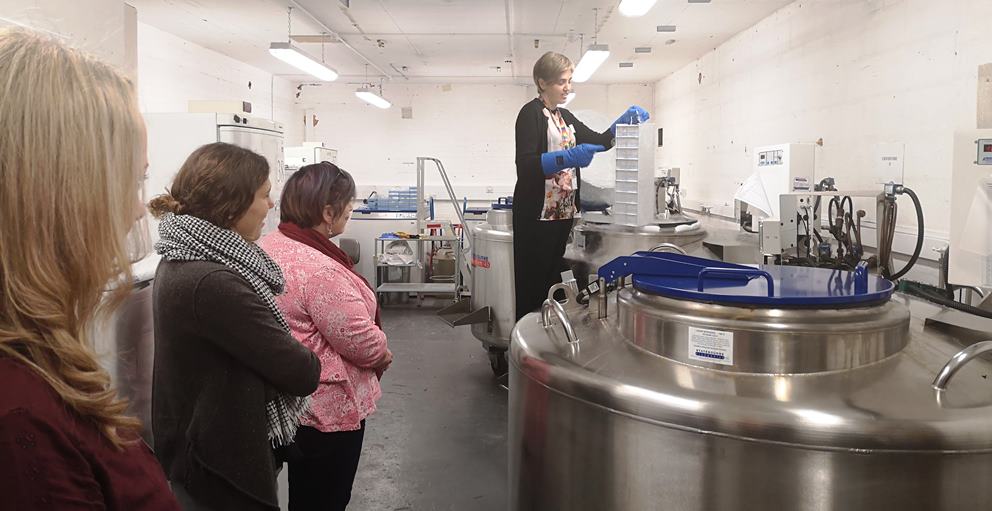
Given how complex a condition cleft is, it’s very unlikely there will ever be a catch-all measure which can prevent a cleft from developing. But thanks to programmes like this, we have the beginnings of a roadmap to break down any barriers a cleft might create one by one until children born with a cleft will have the same chances as any other child of growing up happy, healthy, and able to succeed at the life they choose.
This project is truly unique and gives the UK a chance to be a world leader in cleft research. The answers this data will help to uncover will shape the future of cleft care, including the kinds of support services CLAPA may offer.
To everyone in the cleft community involved with this project as a subject, a reviewer, or even a researcher, the message is clear: your contribution is priceless, and will have an impact far beyond The Cleft Collective’s labs in Bristol. Please continue to sign up to the Cleft Collective’s studies, complete the questionnaires, and above all be proud of the difference you’re helping to make in the lives of people affected by cleft around the world.
Anna Martindale
Communications & Information Manager
CLAPA
FAQ & Links
About the Cleft Collective
The Cleft Collective is one of the largest cleft lip and palate research programmes in the world. It aims to collect the kind of data that will help to answer key questions about cleft lip and palate. Families who sign up will be asked to provide biological samples (such as saliva) and complete questionnaires at key points in their child’s development. It is hoped that the information collected will help to identify some of the biological and environmental causes of cleft, as well as improving support services available for those affected.
Get Involved with the Cleft Collective
Read the latest Cleft Collective Newsletter (Spring 2019)
About CLAPA’s Cleft Collective Consultation Group
This group is made up of a small group of people from our community who are personally affected by cleft lip and palate, either as parents and carers, or as people born with a cleft themselves. A few times a year, this group will meet to discuss different aspects of the Cleft Collective’s research. This is mostly done through video calling, though an in-person meeting is also planned each year.
The people in this group use their personal experiences to help develop materials, as well as guide the research strategy for the future. This includes providing feedback and a fresh perspective on everything from participant recruitment to the development of research questions.
They’re a vital part of the Cleft Collective and we are extremely grateful for their input as volunteers!
To find out more, or to join this group, contact [email protected]
How can CLAPA help with research?
For researchers looking for more in-depth patient and public involvement with their projects, CLAPA now offers competitive consultancy rates which cover a range of extra services beyond just advertising on our website. These include meeting with one of our consultant groups (like the Children & Young People’s Council), creating a specific consultation group (as we’ve done here), staff time to fine-tune materials for the public, and more.
Keep up with cleft research
CLAPA’s monthly e-newsletter, CLAPA Connect, regularly includes news and updates about cleft research, including projects you can participate in. Join the CLAPA Community today to stay up to date.


